Qatar World Cup Stadiums – The Ultimate Guide
Looking to find out more about all eight Qatar World Cup stadiums? Our ultimate guide contains everything that you need to know; from the distance between the stadiums to the costs and capacity – we’ve covered it all. Those of you heading out to Qatar will want to keep cool in the desert heat, so we also cover air conditioning in the World Cup stadiums.
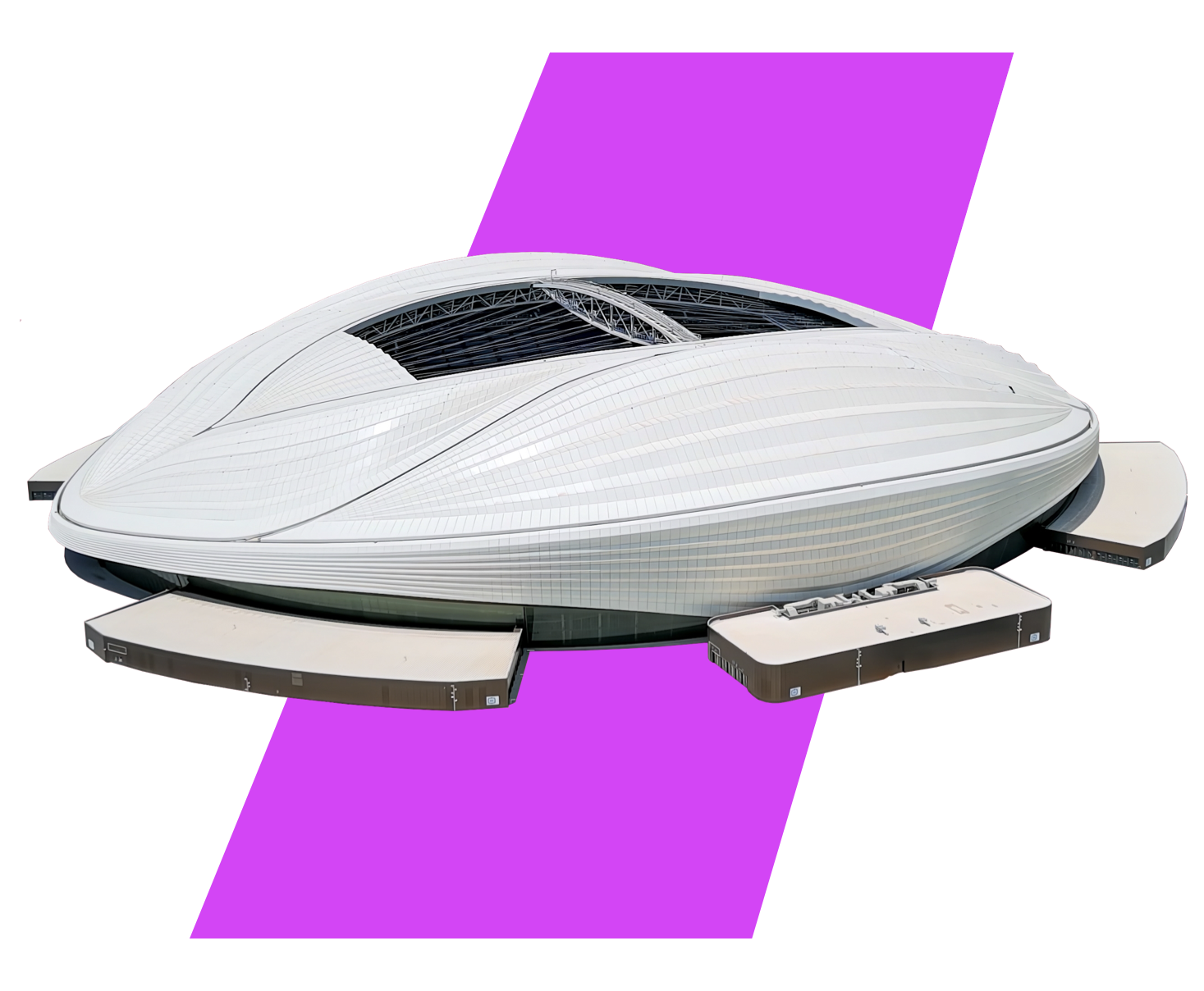
2022 World Cup Stadiums in Qatar
Before you start betting on the FIFA World Cup, you might be interested in learning a little more about the eight purpose-built stadiums hosting matches during Qatar 2022.
All eight World Cup stadiums in Qatar are located within a 35-mile (55km) radius of the capital city of Doha, with the furthest distance being just 45 miles (72.5km). This makes it the most compact World Cup in history, but also means more convenience for travelling fans in Qatar’s notorious desert heat.
Qatar World Cup Stadiums at a Glance
A total of 64 matches will be played across eight stadiums at the Qatar World Cup in November and December 2022. Each stadium will host at least six matches and capacity ranges between 40,000 and 80,000 at each venue.
Here’s some of the most important information you should know about the host stadiums for the Qatar World Cup:
- Opening Match: Al Bayt Stadium
- Final: Lusail Stadium
- Average Stadium Capacity: 47,500 seats
- Largest Stadium: Lusail Stadium (80,000 seats)
- Smallest Stadium: Multiple venues (40,000 seats)
- Average No. of Matches Per Stadium: 8.1
All Eight Qatar 2022 World Cup Stadiums
Now it’s time to share everything you need to know about all eight World Cup stadiums being used for Qatar 2022, including the location, capacity and cost of each stadium.
The key takeaway is that those of you flying out for the tournament this November won’t have far to travel between matches. Remember to plan your route using a Qatar World Cup stadiums map.
Lusail Stadium
Lusail Stadium
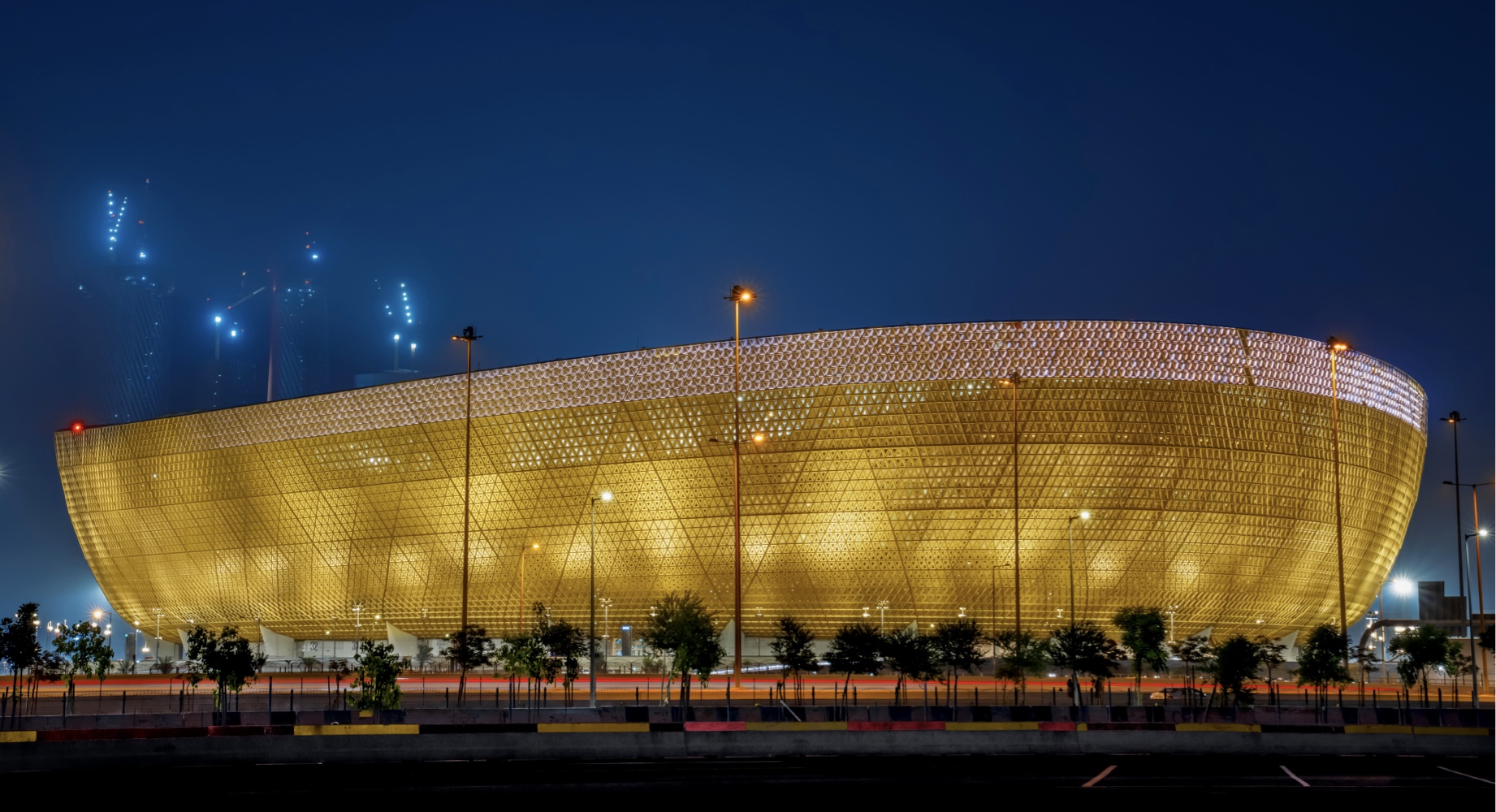
Opened: 22 November 2021
Location: Lusail City, 12.5 miles (20km) north of Doha
Capacity: 80,000 (40,000 post tournament)
Cost: $767 million
With a capacity of 80,000, the Lusail Stadium is the largest Qatar World Cup stadium and will also host the most matches. The venue will host 10 World Cup games, including the final on 18 December 2022.
This stadium was purpose built for the 2022 Qatar World Cup and was officially completed on 22 November 2022. In preparation for the World Cup, the Lusail Stadium hosted the Saudi-Egyptian Super Cup final contested between Al Hilal and El Zamalek.
After the World Cup, it is set to be downsized and partially redeveloped into a community space.
Al Bayt Stadium
Al Bayt Stadium
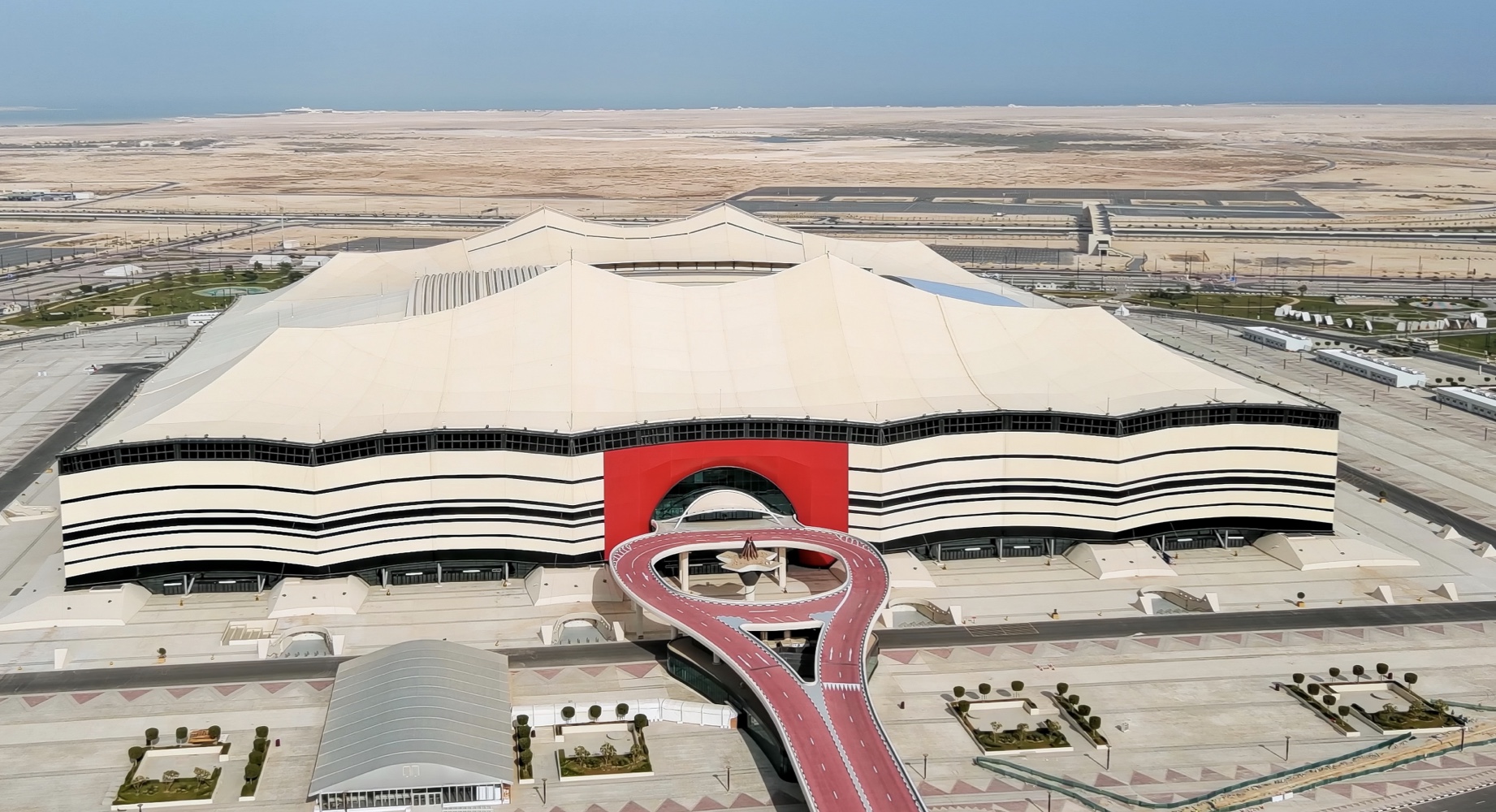
Opened: 30 November 2021
Location: Ras Bu Aboud, 22 miles (10km) north of Doha
Capacity: 40,000 (approx. 30,000 post tournament)
Cost: $874 million
Notching up a final estimated bill of $874 million, the Al Bayt Stadium tops the Qatar World Cup stadiums’ cost list by quite a distance. It features a retractable roof, and the top tier has been designed to be instantly removed after the tournament. As a result, the stadium’s capacity will be reduced by roughly half.
The Al Bayt Stadium will host the opening match of the Qatar 2022 World Cup, as well as a further eight matches, including the semi-final. As a warmup, the stadium hosted five FIFA Arab Cup 2021 games, including the final of the tournament.
Stadium 974
Stadium 974
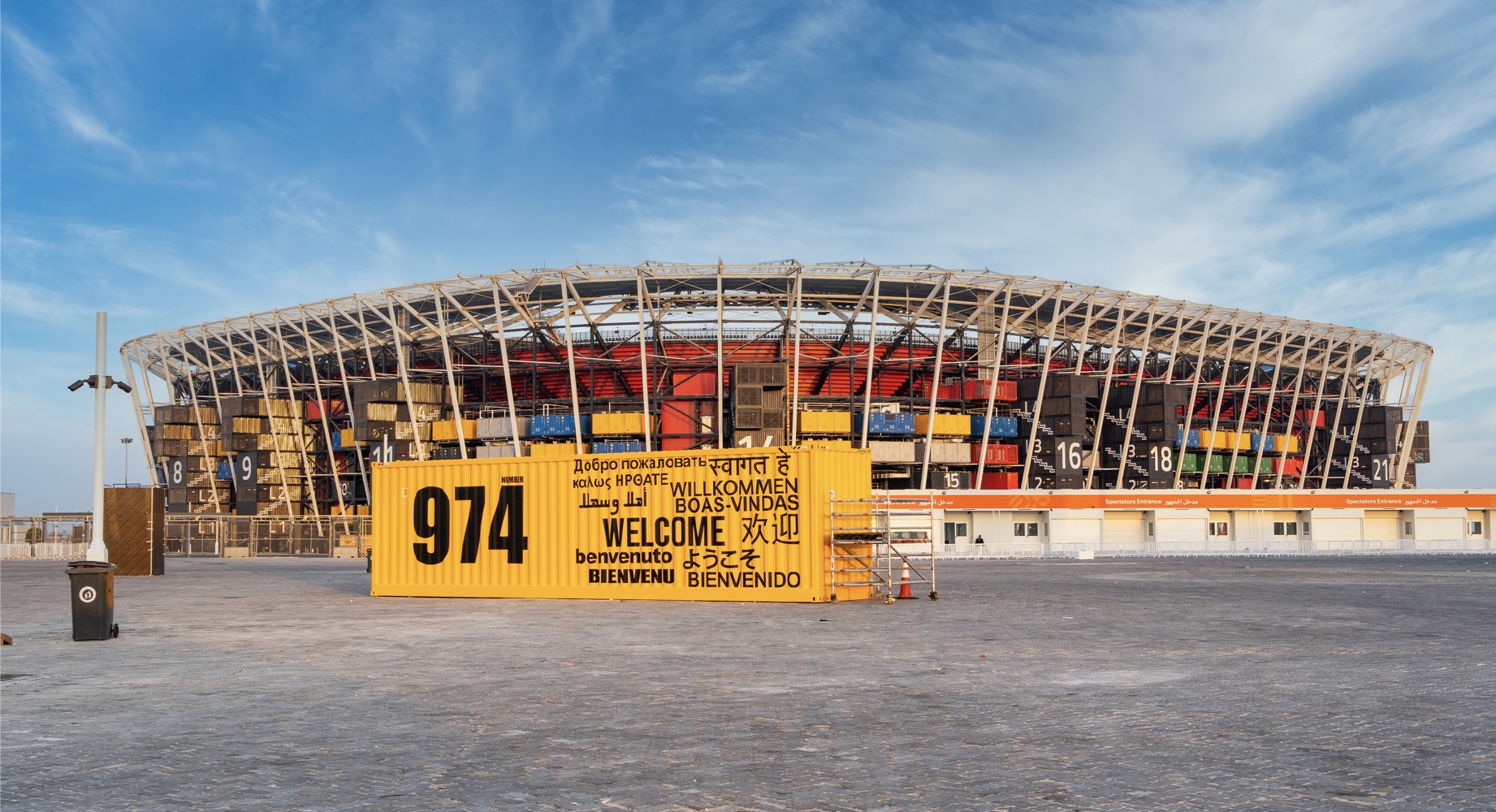
Opened: 30 November 2021
Location: Al Khor City, 6.2 miles (10km) east of Doha
Capacity: 40,000
Cost: Unknown
This is perhaps the most unique of the Qatar World Cup stadiums, as it has been built using 974 recycled shipping containers – hence the name, Stadium 974. It is the first ever temporary structure to host a World Cup and will be completely dismantled once the tournament is over.
Seven Qatar 2022 World Cup games are set to be played here, consisting of six group games and one round of 16 knockout fixture. Like the Al Bayt Stadium, Stadium 974 hosted five 2021 FIFA Arab Cup matches in preparation for the Qatar 2022 World Cup.
Al Thumama Stadium
Al Thumama Stadium
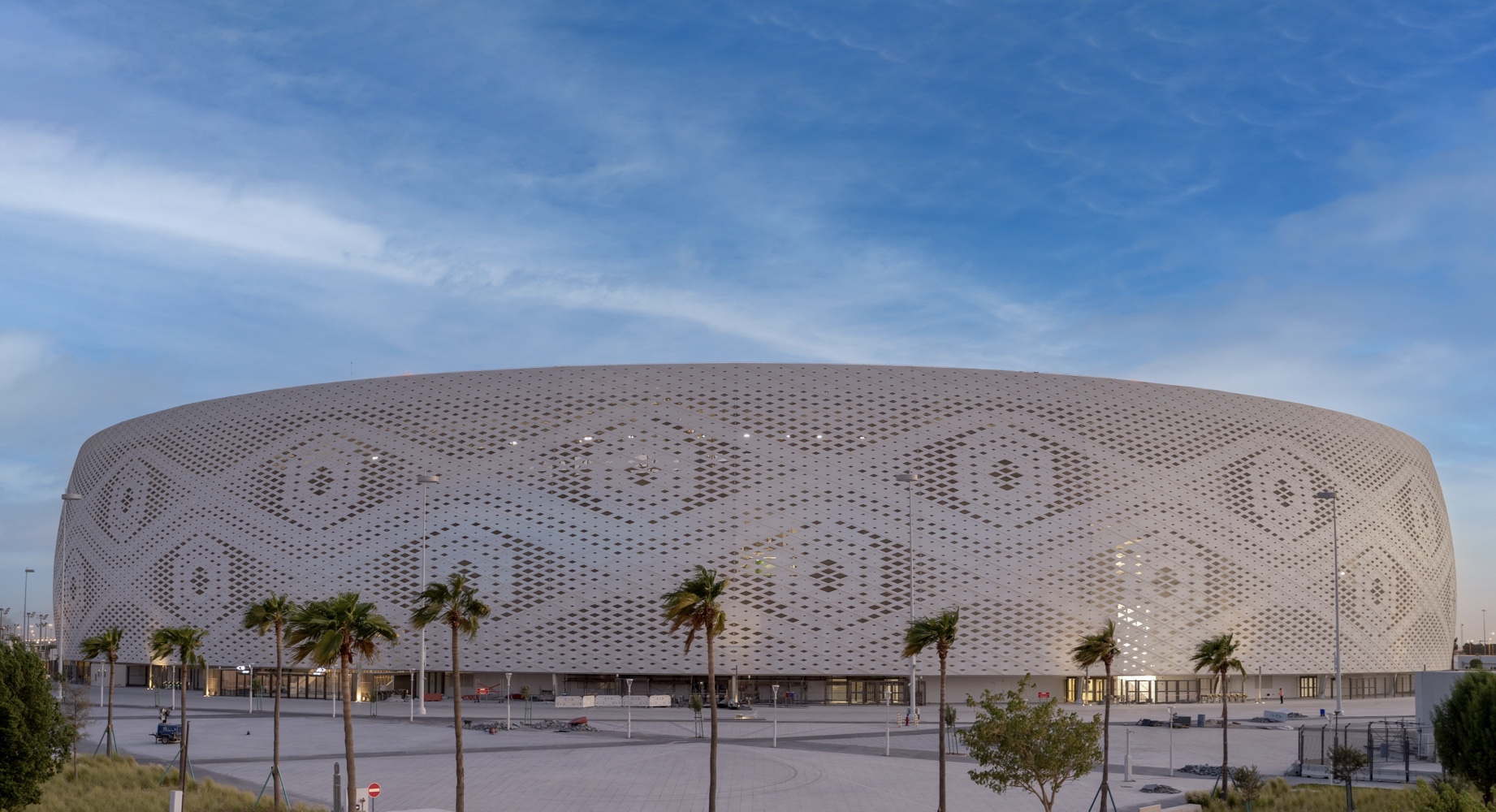
Opened: 22 October 2021
Location: Al Thumama, 7.5 miles (12km) south of Doha
Capacity: 40,000 (approx. 20,000 post tournament)
Cost: $342 million
The Al Thumama Stadium has been built to a unique design that resembles a traditional Middle Eastern hat. Like most Qatar World Cup stadiums, the capacity of this ground is 40,000. However, around half of the seats will be removed and donated to other countries after the World Cup.
Eight World Cup games will take place at this stadium, consisting of six group games, one round of 16 and one quarter-final. To mark its official opening, the Al Thumama Stadium hosted six 2021 FIFA Arab Cup matches.
Ahmad Bin Ali Stadium
Ahmad Bin Ali Stadium
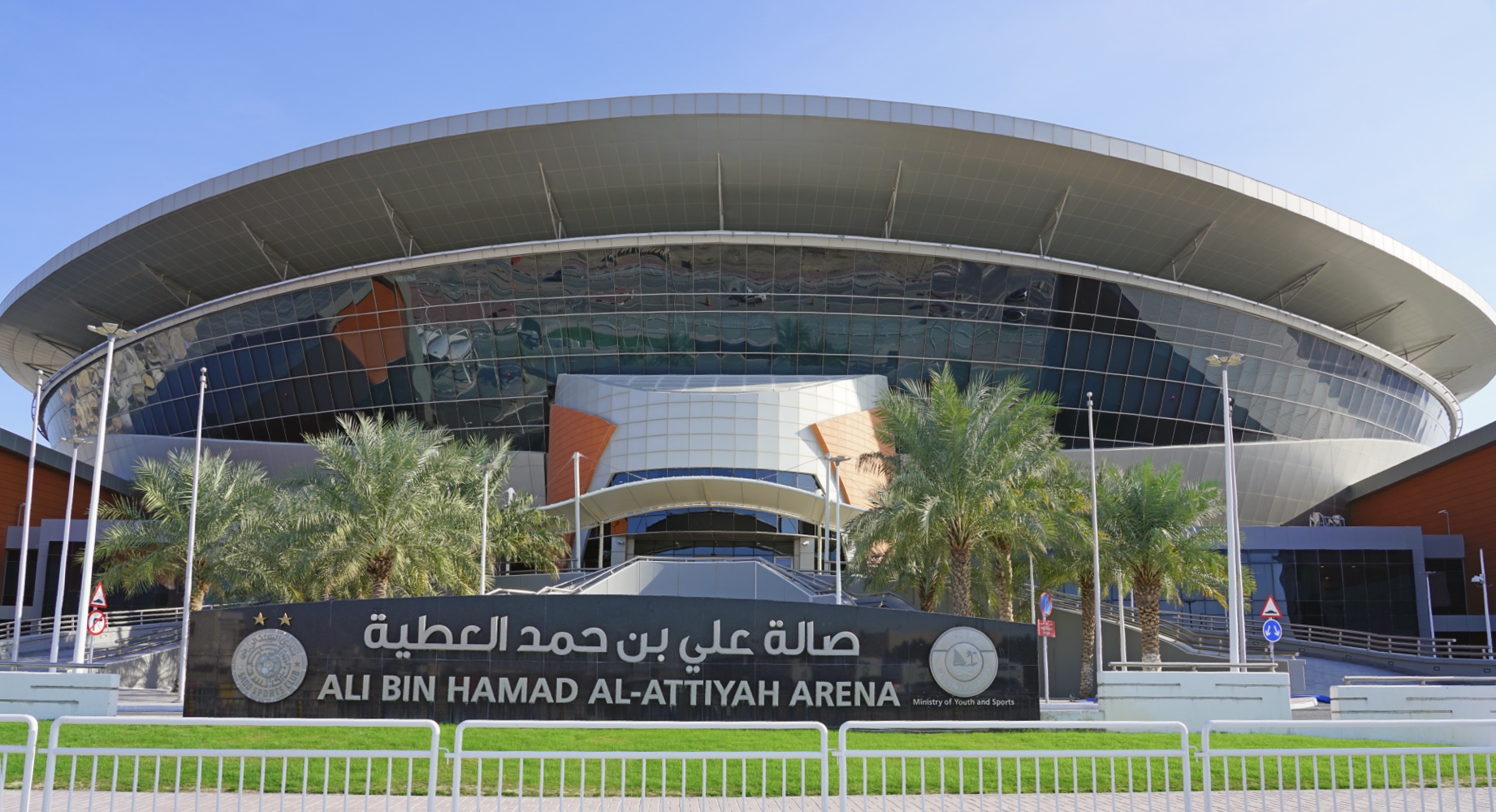
Opened: 2003 (Original), December 2020 (Rebuild)
Location: Umm Al Afaei, 12.5 miles (20km) west of Doha
Capacity: 40,000 (21,000 post tournament)
Cost: $360 million
The original stadium was opened back in 2003 but was bulldozed and completely rebuilt for the 2022 World Cup. It is officially a multi-purpose venue but is currently best-known as the home of two Qatar Stars League football clubs: Al-Rayyan SC and Al Kharaitiyat SC.
It was a host venue for the 2020 FIFA Club World Cup, as well as the 2021 FIFA Arab Cup and two 2022 FIFA World Cup intercontinental playoffs. Like the majority of Qatar World Cup stadiums, its capacity will be reduced by almost half after the tournament.
Al Janoub Stadium
Al Janoub Stadium
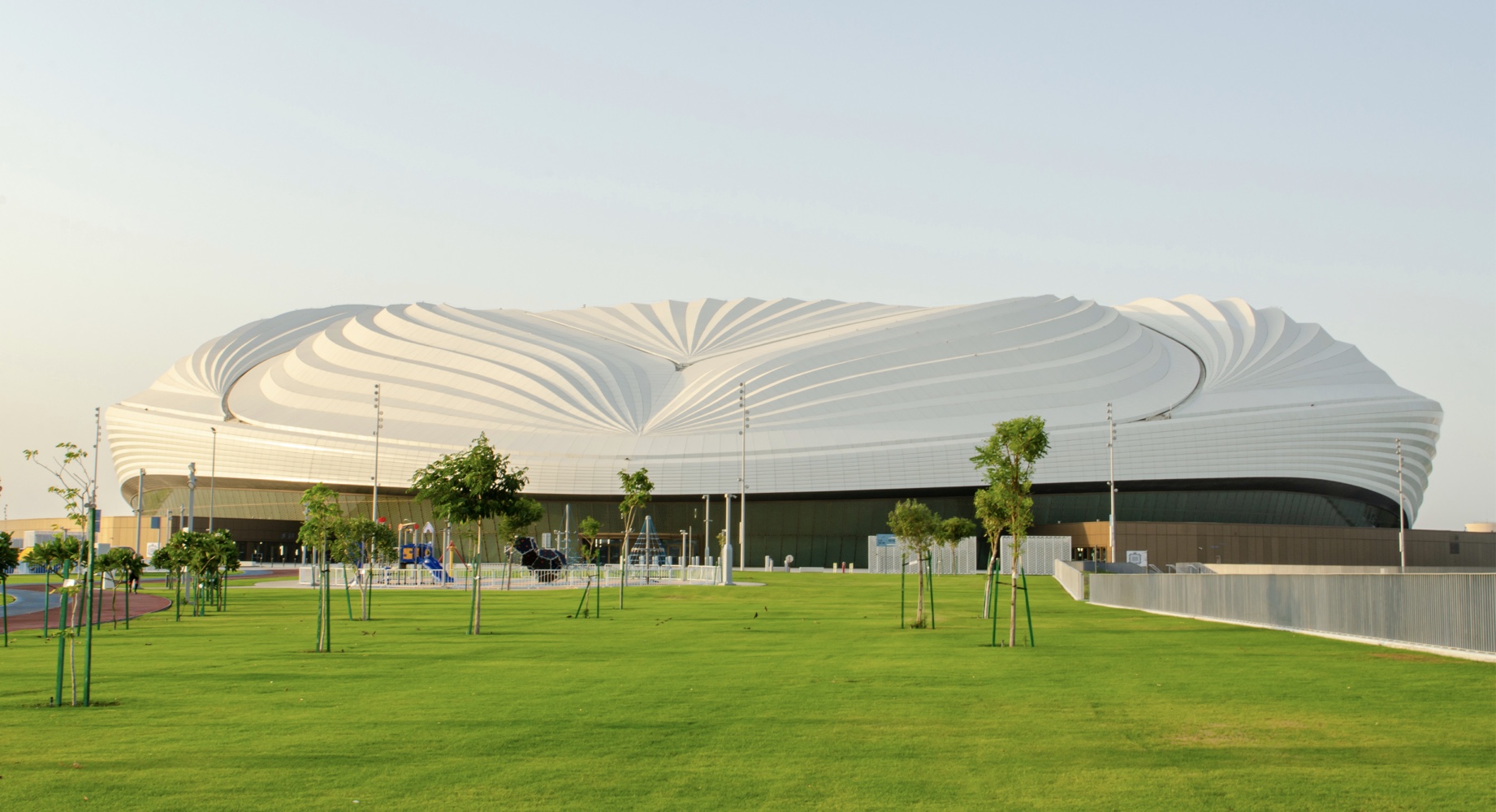
Opened: 16 May 2019
Location: Al Wakrah, 13.5 miles (22km) south of Doha
Capacity: 40,000 (20,000 post tournament)
Cost: $700 million
This stadium officially opened on 16 May 2019 when it hosted the Amir Cup final between Al Sadd SC and Al-Duhail SC. It has since hosted a number of competitive football matches, including the 2020 AFC Champions League Final and the 24th Arabian Gulf Cup.
Once the 2022 World Cup is over, the Al Janjoub will become the new home of Qatar Star League side Al-Wakrah SC. Its capacity will be reduced by around 50%, with the removed seats being donated to countries in need of sporting development.
Education City Stadium
Education City Stadium
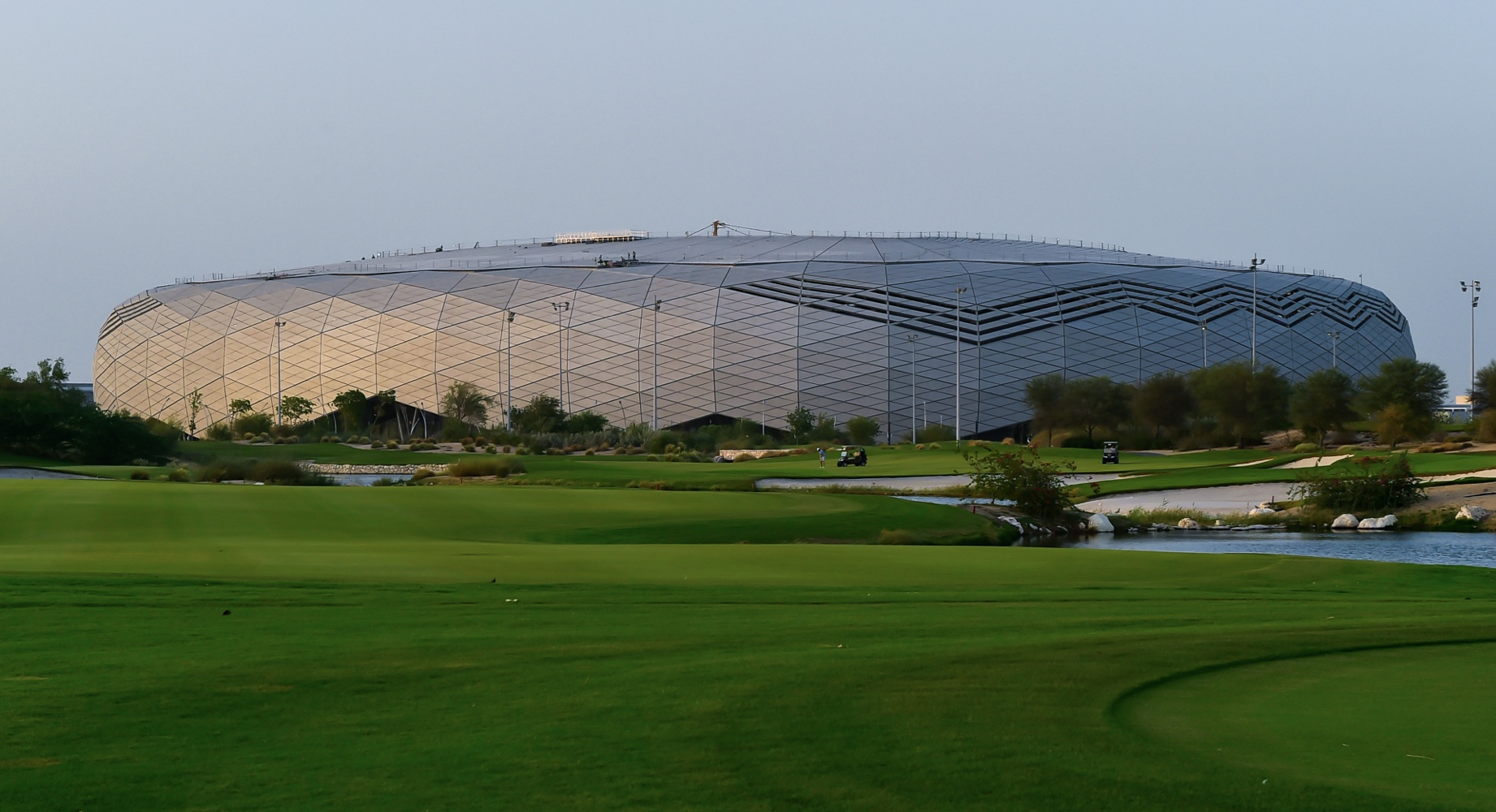
Opened: 15 June 2020
Location: Al Rayyan, 4.3 miles (22km) south of Doha
Capacity: 40,000 (25,000 post tournament)
Cost: $700 million
Named because of its location in a university district, the Education City Stadium was constructed using around 20% green building materials. This has been a running theme for most of the newly built Qatar World Cup stadiums, ranking them all among the most environmentally sustainable grounds in the world.
The Education City Stadium will host eight World Cup matches, including a round of 16 fixture and one quarter-final. It was originally announced as the host venue for the 2019 FIFA Club World Cup final, however, it wasn’t completed on time and hosted two matches of the tournament the following year instead.
Khalifa International Stadium
Khalifa International Stadium
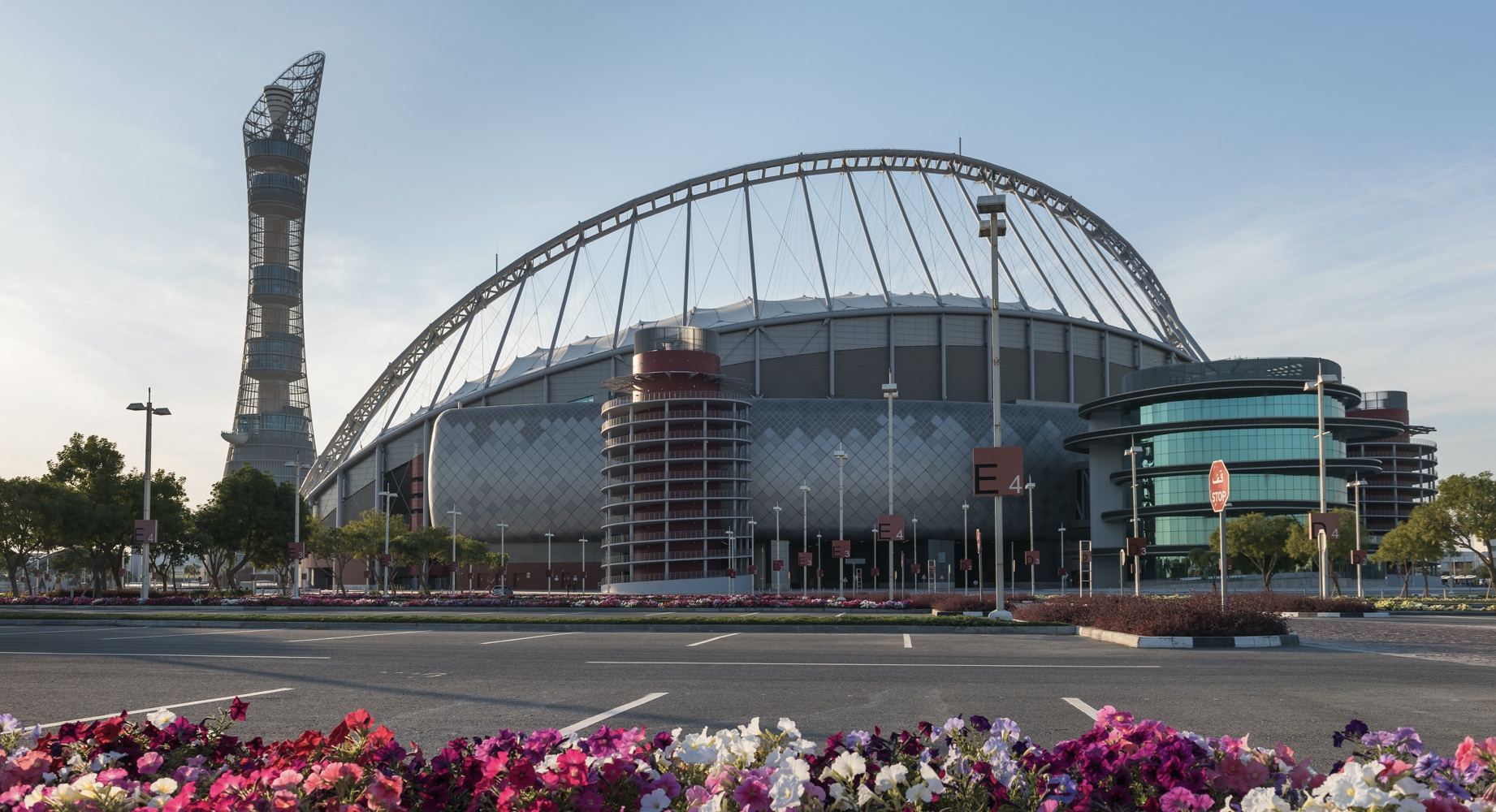
Opened: 1976 (Original), 2017 (Rebuild)
Location: Aspire, 3 miles (5km) south of Doha
Capacity: 40,000
Cost: $374 million
Last but not least, we have the oldest of the eight Qatar World Cup stadiums, which was originally constructed in 1976 to host track and field venues. Prior to its renovation for the World Cup, the Khalifa International Stadium was last refurbished for the 2006 Asian Games.
The Khalifa International Stadium has hosted multiple high-profile football and athletics events, including the aforementioned Asian Games.
You might remember the stadium from the 2019 FIFA Club World Cup final, when Liverpool beat Brazil’s Flamengo 1-0. Some players from that night may get to revisit the stadium, as it will host England’s opener against Iran on November 21.
Are Qatar World Cup Stadiums Air Conditioned?
One of the biggest concerns for fans and players alike ahead of the 2022 World Cup has been Qatar’s notorious blistering desert heat. Of course, the tournament has already been moved to the winter to accommodate this. You can therefore expect average temperatures of around 25°C, as opposed to the highs of 50 that it can hit during the summer months.
Despite the seasonal shifting of the world cup, seven out of the eight Qatar World Cup stadiums have been fitted with state-of-the-art air conditioning. The air condition units used at the World Cup have been designed by a Qatar University professor known as “Dr. Cool”.
The air conditioning will keep fans and players chilled to a pleasant 21°C while inside the stadiums. The air conditioning units are all powered by a solar farm on the outskirts of Doha, which makes it around 40% more sustainable, according to World Cup organisers.





